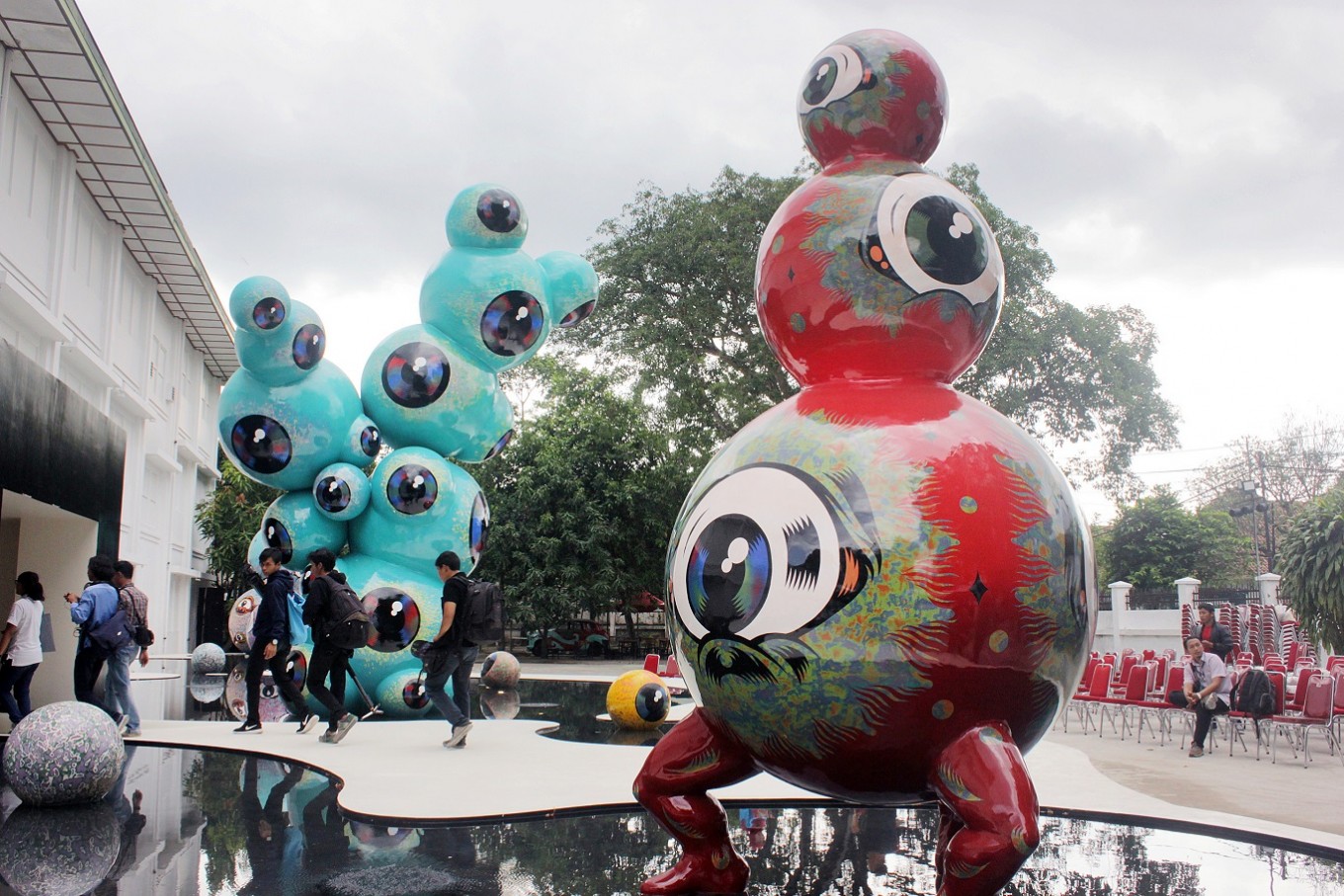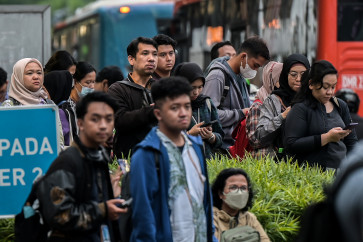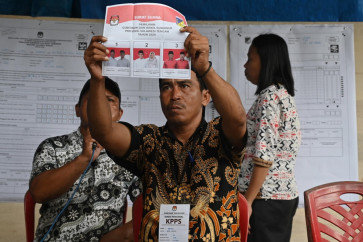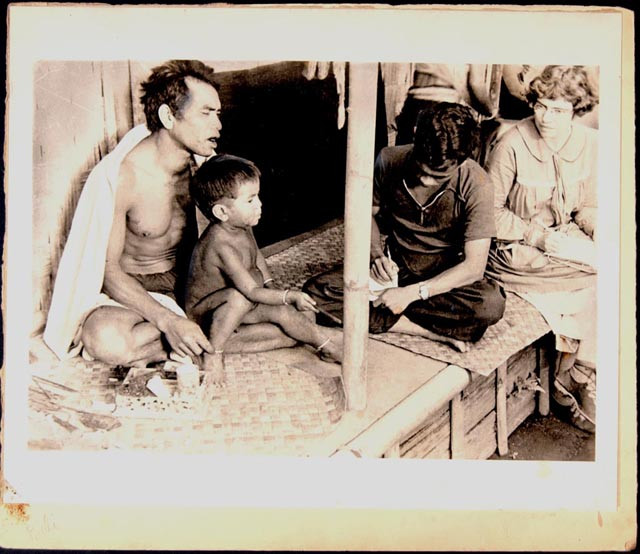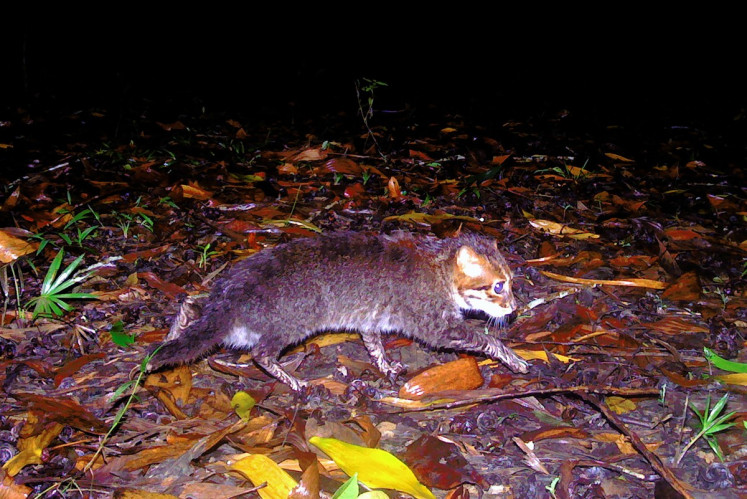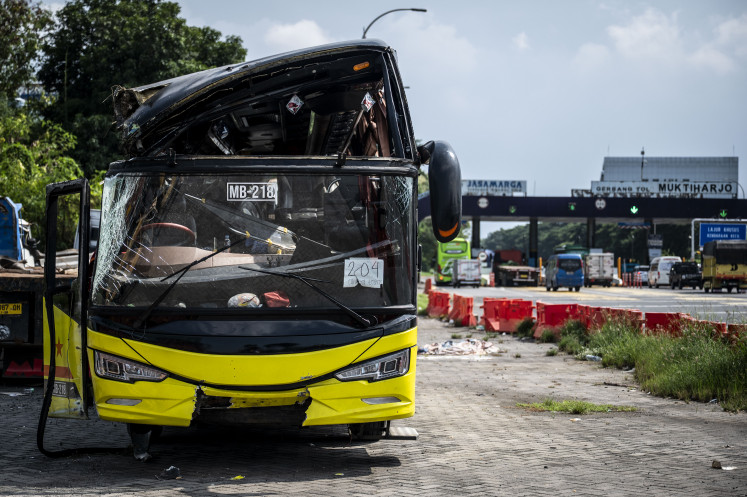Popular Reads
Top Results
Can't find what you're looking for?
View all search resultsPopular Reads
Top Results
Can't find what you're looking for?
View all search results10th ART|JOG: Provokes changing perspectives
Change text size
Gift Premium Articles
to Anyone
T
he 10th ART|JOG puts forward changing perspectives as this year’s theme as part of an appeal to the public to keep an open mind in observing different issues.
Six large sheets of cowhide hang from the ceiling of a room at the Jogja National Museum (JNM), each bearing different painted images, such as a dissected human head, a human skeleton and internal organs. The paintings come off as eerie — and that’s exactly how artist Agus Suwage visualizes today’s “Changing Perspective,” the theme of this year’s ART|JOG festival, a month-long contemporary art exhibition in Yogyakarta.
Read also: ART|JOG|10 celebrates 10 years, features global artists
In his work entitled Anatomy of Desire #2, Agus warns people against being readily fascinated by ostensibly beautiful skin, which, in fact, only covers up potentially horrifying content.
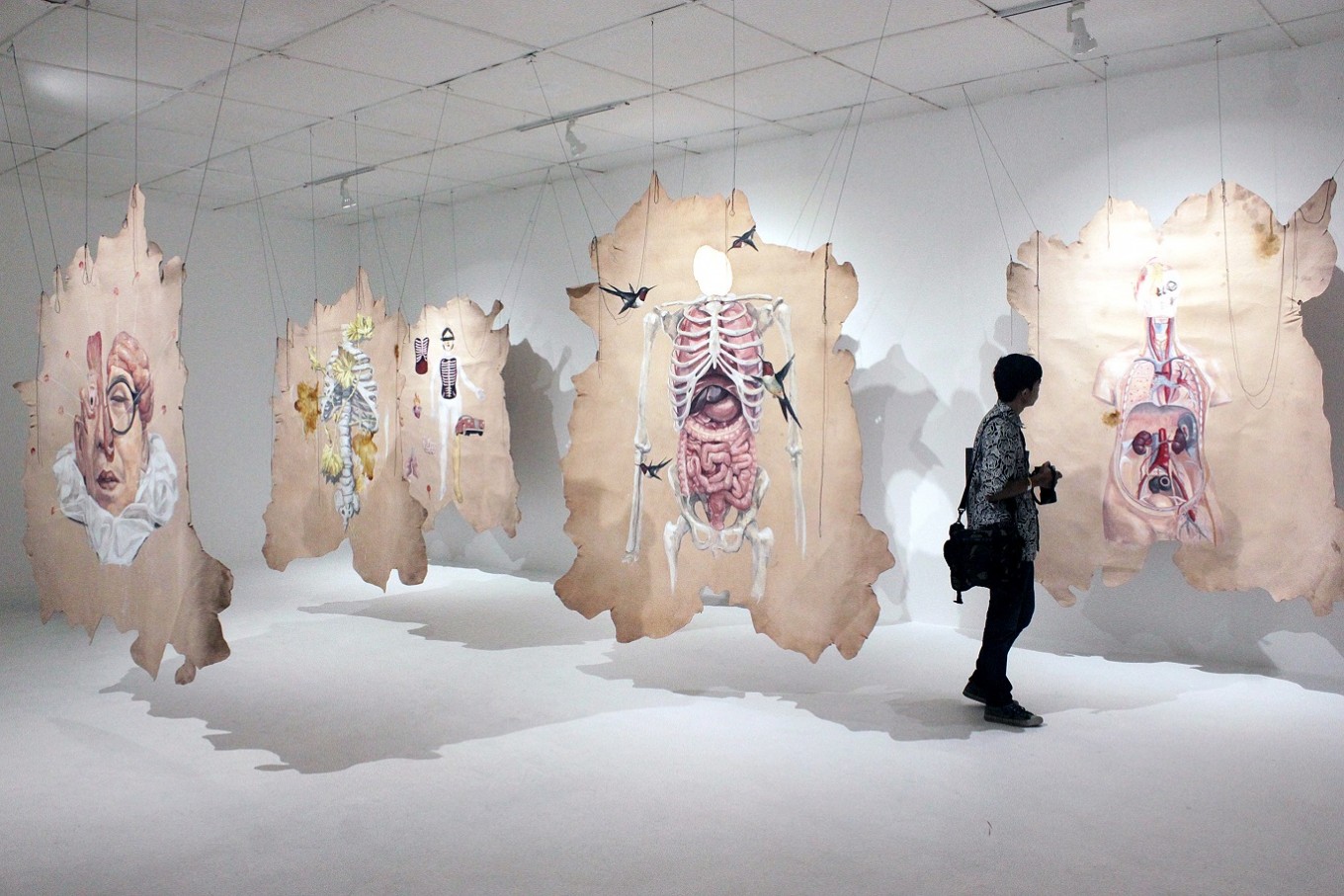 Anatomy of Desire #2 by Agus Suwage(JP/Bambang Muryanto)
Anatomy of Desire #2 by Agus Suwage(JP/Bambang Muryanto)
In the context of sociological, today’s many bombastic narratives from various sources should be approached with caution, to prevent ourselves from being duped by seemingly impressive discourses.
Everybody should be prepared to adopt a changing perspective that is critical of such discourses to find out their covert motives.
Agus is one of the 59 Indonesian and international artists displaying their works at ART|JOG, the largest art market and expo in Asia running until June 19. Eleven of the participants come from Britain, Canada, China, Denmark, Germany, Japan, Singapore and the Philippines.
The event’s curator, Bambang “Toko” Witjaksono, said the theme was chosen to appeal the public to maintain an open mind in observing different emerging issues, as realities in the world cannot be viewed in a literal manner.
He contributed Indonesia’s recent tendency for intolerance to some people’s one-perspective way of thinking.
“With an open mind, another perspective can be considered in viewing a problem. We can thus be wiser,” he said.
Most of this year’s ART|JOG participants are young artists displaying unique pieces with messages that “shake” the established mindset.
Young visual artist Uji “Hahan” Handoko presents Speculative Entertainment No.2, in which he offers 12 paintings in neat rolls so that the pictures are hidden. In order to identify their content, potential buyers can listen to a recorded analysis by an “art agent” through a sound system in the display room. Hahan has his own changing perspective and buyers’ artistic interest is aroused by the agent’s review.
Since its May 19 opening by Gusti Kanjeng Ratu (GKR) Mangkubumi, the eldest child of Yogyakarta Governor Sultan Hamengkubuwono X, ART|JOG has been teeming with visitors, including local and foreign collectors, and art gallery personnel seeking distinctive artworks, even on the event’s first day.
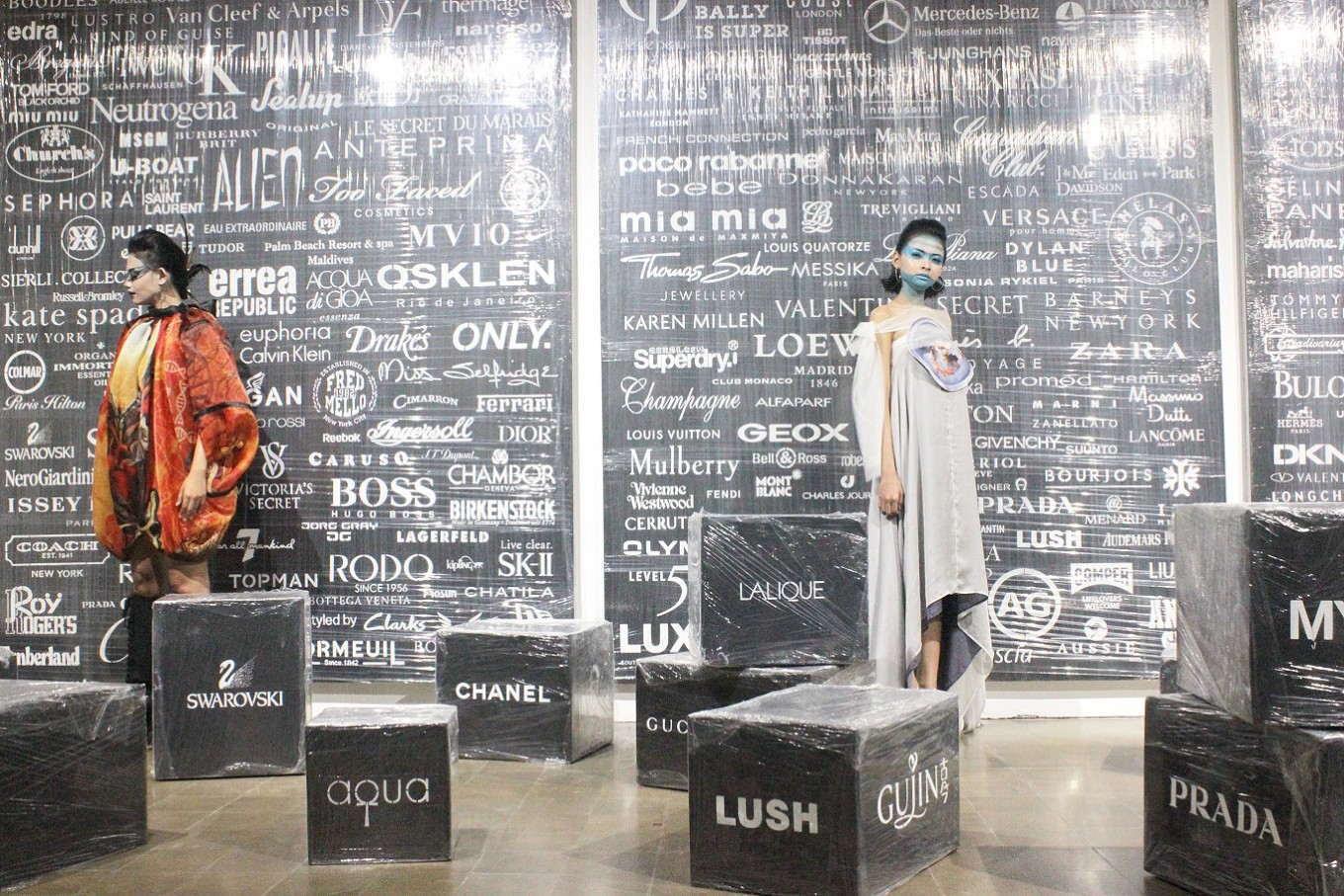 Fashion statement: Farhan Siki’s piece, titled Unquenchable Sense of Deficiency, highlights consumers’ tendency to choose branded products while ignoring their quality.(JP/Bambang Muryanto)
Fashion statement: Farhan Siki’s piece, titled Unquenchable Sense of Deficiency, highlights consumers’ tendency to choose branded products while ignoring their quality.(JP/Bambang Muryanto)
ART|JOG has remained a very appealing art program. Apart from its contemporary art objects, various performing arts — from dance, theater, music as well as film screenings — are presented at the museum for a full month. In line with the event, art spaces around Yogyakarta also host fine art displays.
Read also: Leaving indelible impressions through street art
As part of ART|JOG’s tradition, organizers appoint one commission artist whose work is positioned in the front yard of the Jogja National Museum. This year, the ART|JOG committee chose young artist Wedhar Riyadi and his art installation called Floating Eyes. Wedhar’s work features large eyeballs in bright colors placed in swimming pools, serving as a reminder that the cyber world can be compared to giant eyeballs that constantly survey what everyone is doing.
In the pools, people can see their own reflections and the reality around them. At dusk, Wedhar’s composition is even more visually arresting, with ripples of the water reflected onto the museum’s walls, as if creating a (new) reality in the virtual world that can influence people and make them experience a changing perspective.
Another composition drawing visitors’ attention is Setu Legi’s Universal Syndrome, which showcases a large mountain — represented by a large batik umbrella — placed in the middle of the room. A man clad in a Javanese costume also sits in the center, playing a rebab (Javanese violin) to create a Javanese atmosphere.
The four walls of the room bear images depicting social issues caused by development, such as traffic jams, trash, hotel construction, mining operations and infrastructure expansion. A traditional community head is also pictured, unable to do anything about what is happening around him.
Read also: Casa Indonesia exhibition boasts limitless imagination
“This is a reflection of today’s social changes,” Setu said.
The artist uses terracotta water for his works, resulting in a soft effect that produces a grim ambiance. Without making any explicit descriptions, the artist is portraying social transformations with all their impacts taking place in Yogyakarta today — something that occurs all across Indonesia.
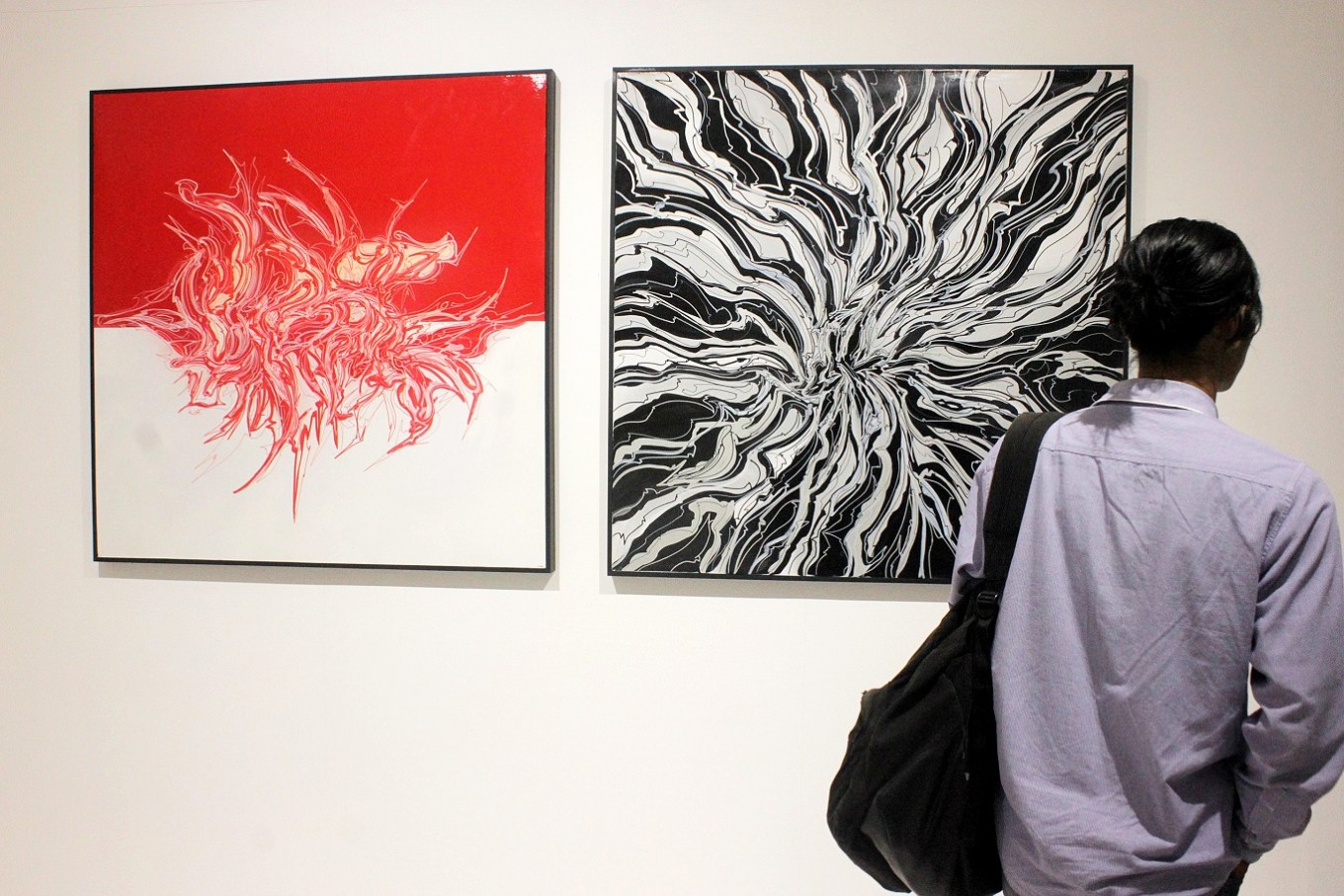 Visitor looking at abstract paintings by Kristian Hornsleth from Denmark, one of which is entitled Red White.(JP/Bambang Muryanto)
Visitor looking at abstract paintings by Kristian Hornsleth from Denmark, one of which is entitled Red White.(JP/Bambang Muryanto)
This is also depicted by Kristian Hornsleth from Denmark in three abstract paintings, one of which is entitled Red White, showcasing a backdrop of red and white (Indonesia’s national colors) with abstract lines in the middle.
“If you look at the picture closely, you will be confused, but it will be beautiful from a distance. It describes the situation in Indonesia; when you are in Indonesia, there are many problems, but Indonesia looks beautiful from far away,” Hornsleth said.

